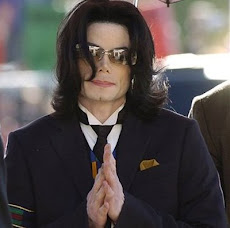 Opanin Isaac Kwadwo Asirifi known popularly in the Gyidi Church as Dadeako was born to Opanin Kwame Appiah and Madam Mary Yaa Henewaa. In 1958, Emeritus Professor C. G. Baeta went to Osiem to interview Opanin Asirifi. In the interview, Opanin Asirifi told Baeta that he was 40 years old [1]. Prof Kofi Asare Opoku also notes that Dadeako was born in 1918 which is in tandem with Baeta’s assertions [2]. However, according to Kwasi Boateng and Nicholas Adom, both members of the Gyidi Church, the man of God was born in 1912 [3].
Opanin Isaac Kwadwo Asirifi known popularly in the Gyidi Church as Dadeako was born to Opanin Kwame Appiah and Madam Mary Yaa Henewaa. In 1958, Emeritus Professor C. G. Baeta went to Osiem to interview Opanin Asirifi. In the interview, Opanin Asirifi told Baeta that he was 40 years old [1]. Prof Kofi Asare Opoku also notes that Dadeako was born in 1918 which is in tandem with Baeta’s assertions [2]. However, according to Kwasi Boateng and Nicholas Adom, both members of the Gyidi Church, the man of God was born in 1912 [3].When Opanin Asirifi was in his teen years he was sent to Gyakiti near Akwamufie for apprenticeship and specialised as a blacksmith. After three years in Gyakiti, he went to Kumasi to continue to professionalise his skills. In 1933, he joined the Gyidi Church (Faith Church) which was flourishing under the leadership of Opanin Samuel Brako. Dadeako became Brako’s Bible reader or “kenkani” in the Akan parlance. He became very close to Samuel Brako. Brako sent him on many errands including conducting service on his behalf. Samuel Brako prayed for Dadeako and God anointed him with the power of the Holy Spirit, as a result Dadeako became a very powerful prophet in the church. He had the gift of exorcism meaning he could cast demons.
Dadeako lived with Samuel Brako for years until he married his first wife Maame Botwe. Few years later, he married his second wife by name Maame Ashia. Around the mid-1940s, Samuel Brako died and some of his aides including Opanin Asirifi wanted to succeed him. There was therefore a power struggle between Dadeako and some of the leaders in Kwahu, Asante and Akuapim. Efforts were made at the Kukuom Convention to resolve the leadership crisis but there was no agreement. At the Obogu Convention, the succession batte re-surfaced. The other leaders said they would not allow Dadeako to lead the church because he had two wives. The misunderstanding was not resolved and the church split into two with Dadeako leading one of the factions.
Dadeako returned to Osiem and named his faction as Saviour Church which continued to use Osiem as the headquarters. The other faction led by Opanin Yaw Dankwa, Abraham Nsiah and Emmanuel Obeng became known as True Faith Church with Kwahu Praso as its headquarters. Both factions call themselves Gyidi.
Dadeako was backed by several leaders and members in Akyem, Fante and Asante. They included John Kwaku Badu brother of Samuel Brako, Prophet Peter Mensah aka Obotan of Kumawu, Pastor Stephen Doughan of Gomoa Fetteh and Opanin Stephen Yaw Atta of Agogo. Dadeako was also supported by several of the prophets in Osiem including Prophet Kwaku Emmanuel son of Samuel Brako and Nana Kwasi Gyan.
Dadeako set about building the church. Through his energetic leadership, several branches of Saviour Church were opened across the country including at Subriso, Nnadieso, Nkawnkaw, Accra, Kumasi etc. He also set about developing the church’s infrastructure at Osiem. For example, he initiated the building of a new house of God project at Osiem and got it completed. He constructed a large platform that was cemented with durable materials. The platform became the avenue for the church’s convention. Road was constructed from the main Osiem-Bunso Road to the mission. He got the whole mission from Maame Akosua Kobua’s house to the new house of God cemented. He worked tirelessly with the leadership of the Osiem community and brought electricity to Osiem and ensured that most of the houses were connected to the grid. In the 1990s, he constructed boreholes in the mission and made water available to everyone.
He oversaw the expansion of the church to every part of Southern Ghana. His prophetic work continued and this made him a revered figure in the church. Many people with several spiritual, social and economic problems came to him and their problems were addressed. Because of this prolific prophetic power many people began to call him Dadeako, particularly since the early 1980s. Today, many of the youth even think that Dadeako was his real name but it was a title or an accolade given to him by members of the church.
He encouraged the branches of the church to go into farming, as a consequence theft and other crimes were absent in the church. Under his leadership, some changes were made to the liturgy of the church. For example, in the 1970s, new musical instruments were introduced that changed the nature of the church’s songs.
Elder Asirifi died on 12 November 1997 at Nkoranza and was brought to Osiem for burial. He left behind about 50 children and about 150 grandchildren. His death in 1997, led to a power struggle between his son Prophet Elijah Kofi Asante and Opanin Abraham Kwaku Adusei leading to a split of the church into two.
Notes
1] Baeta, С. G. 1962. Prophetism in Ghana. A Study of some ‘Spiritual’ churches. London, S.C.M. Press, p. 66
2] Opoku, K. A. 1970. A Directory of Spiritual Churches in Ghana. Research Review (Legon) 7, pp. 98-115.
[3] Boateng, K. and Addo, N. n. d. Saviour Church of Ghana: Organisation and Spread, p. 4.
Written by Lord Adusei







No comments:
Post a Comment